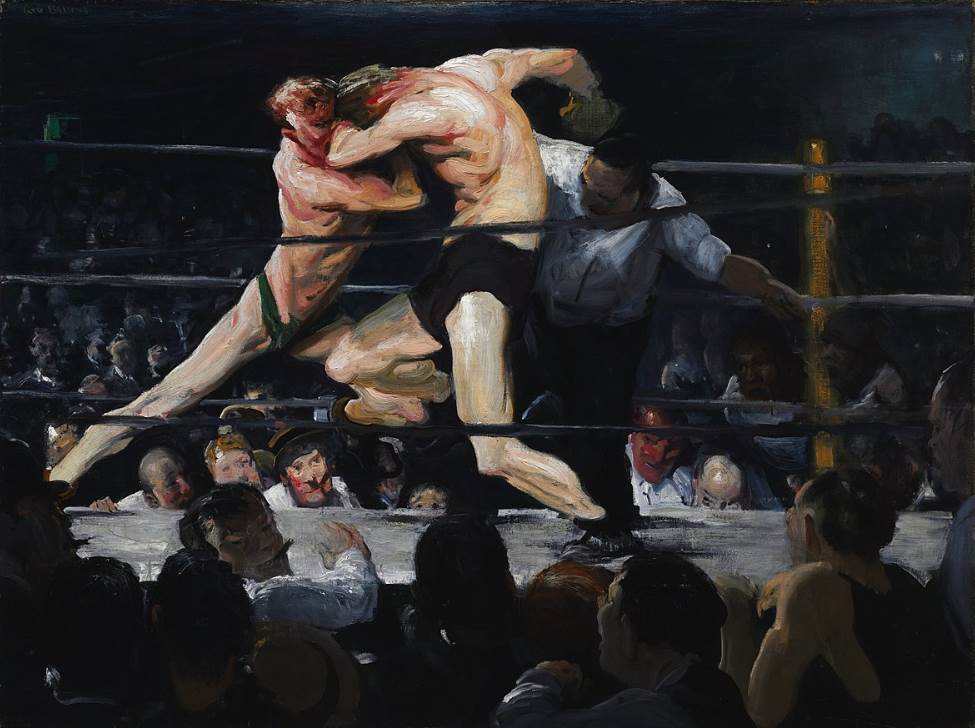This museum is the 4th-wealthiest art museum in the United States. This translates into the fact that it holds an incredible collection of objects.
The Cleveland Museum of Art or “CMA” is located in the University Circle neighborhood just east of the city center. The setting in the Wade Park District, just south of the Wade Oval park, is quite impressive as well.
The museum was founded as a trust in the year 1913. It is housed in a magnificent Beaux-Arts building which has been expanded with modern facilities several times in the 20th century.
The CMA opened its doors to the public for the first time in the year 1916 and is renowned for its collection of Asian and Ancient Egyptian artifacts, as well as paintings from the greatest artists in history.
In this article, you’ll discover some of the most famous paintings at the Cleveland Museum of Art, masterpieces that you can’t miss during your visit.
1. The Burning of the Houses of Lords and Commons – J.M.W. Turner
- Date created: 1834
- Dimensions: 92 x 123 centimeters (36.2 x 48.4 inches)
The Burning of the Houses of Lords and Commons is the name of two paintings by J.M.W. Turner (1775-1851), an English artist and one of the leading painters of the Romantic era. He portrayed his distinctive style in this work which consists of a hazy landscape with bright colors.
This painting depicts an actual event, the burning of the medieval Palace of Westminster, which J.M.W. Turner witnessed firsthand in 1834. The destroyed building was replaced with the current version of the Houses of Parliament and the Iconic Big Ben clocktower. The other version is part of the collection of the Philadelphia Museum of Art.
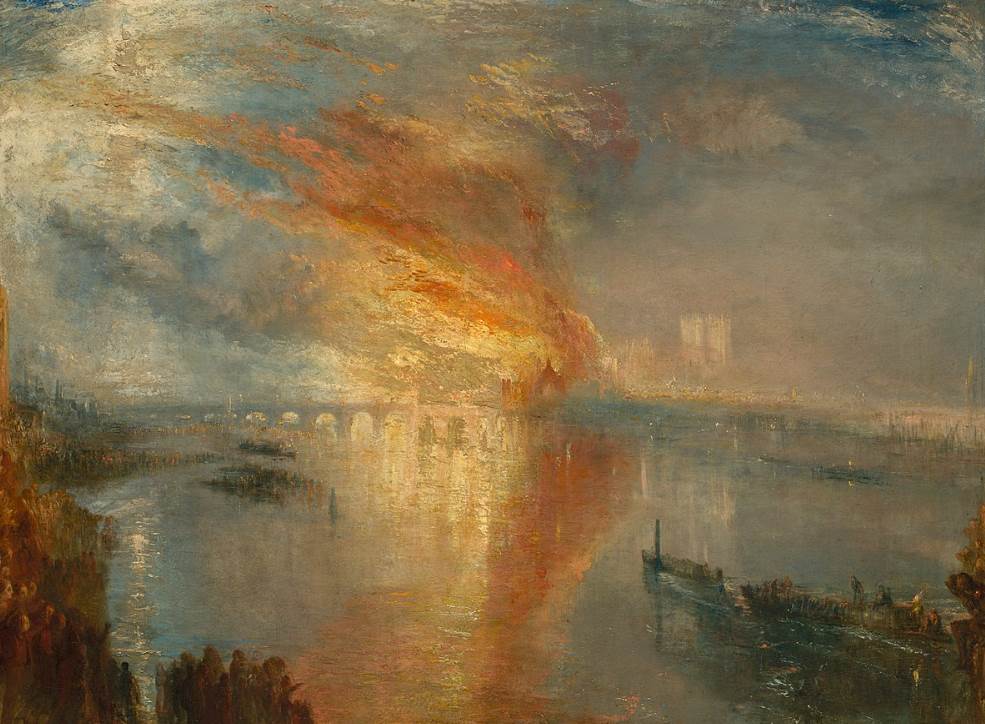
2. La Vie – Pablo Picasso
- Date created: 1903
- Dimensions: 196.5 x 129.2 centimeters (77.36 x 50.86 inches)
La Vie is an intriguing painting by Pablo Picasso, the Spanish artist who lived and worked in Paris for extended periods of his life. He moved to Paris in the early 20th century and the initial phase of this transition is marked as his Blue Period (1901-1904). This was a period in which the aspiring artist didn’t achieve the success he was hoping for yet.
This resulted in gloomy, dark, and blueish paintings that often transpire a sense of desperation. La Vie is a painting that embodies this period in the early phase of his career. It depicts a couple and the man has been identified as Picasso’s friend, painter Carlos Casagemas, who committed suicide in 1901.
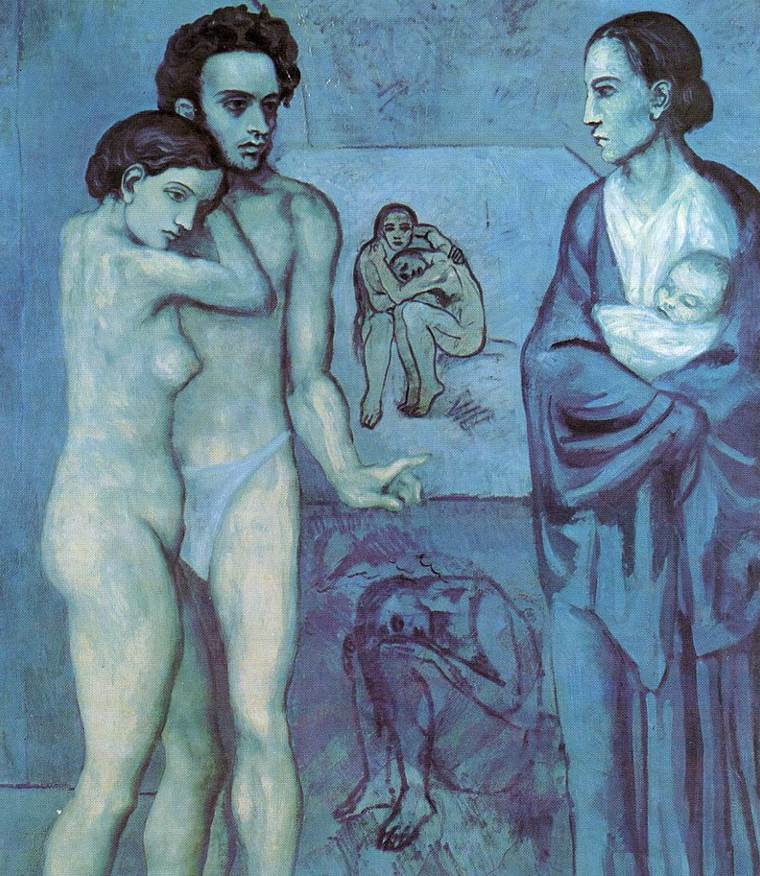
3. Twilight in the Wilderness – Frederic Edwin Church
- Date created: 1860
- Dimensions: 101.6 × 162.6 centimeters (40 × 64 inches)
Twilight in the Wilderness is considered to be one of the best works by Frederic Edwin Church (1826-1900), an American artist and landscape painter. He was one of the leading figures of Hudson River School, a group of landscape painters who were influenced by the Romantic artists in Europe.
Church captured the beautiful landscape of the northeastern part of the United States. This work embodies his style which often included amazing panoramas, sunset, and dramatic use of light to enhance the sense of drama. It’s believed that this landscape was compiled from several sketches he made during his visits to the US state of Maine.
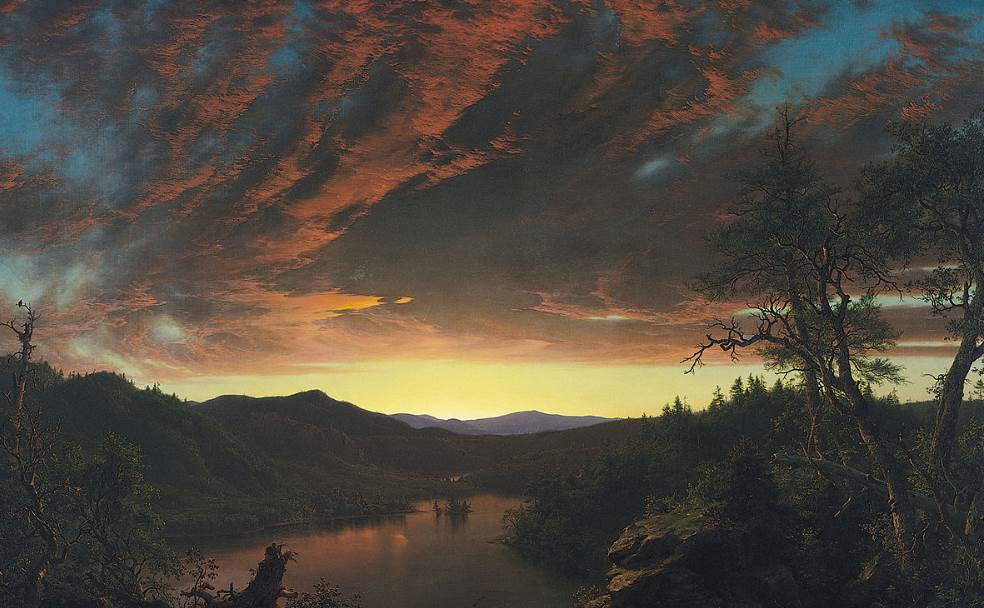
4. The Crucifixion of Saint Andrew – Caravaggio
- Date created: 1607
- Dimensions: 202.5 × 152.7 centimeters (79.7 × 60.1 inches)
The Crucifixion of Saint Andrew is a typical painting by Caravaggio (1571-1610), the Baroque master who took the use of Chiaroscuro to another level. This dramatic use of light and shadow is visible in this work. It depicts the martyrdom of Saint Andrew, an event that presumably took place in modern-day Greece.
The painting was produced during a time when Caravaggio was on the run after a fatal incident in Rome in 1606. He briefly lived in Naples from where the painting was taken to Spain in 1610. It was acquired by the Cleveland Museum of Art from the Arnaiz collection in Madrid in 1976 and has been one of the highlights of the museum ever since.
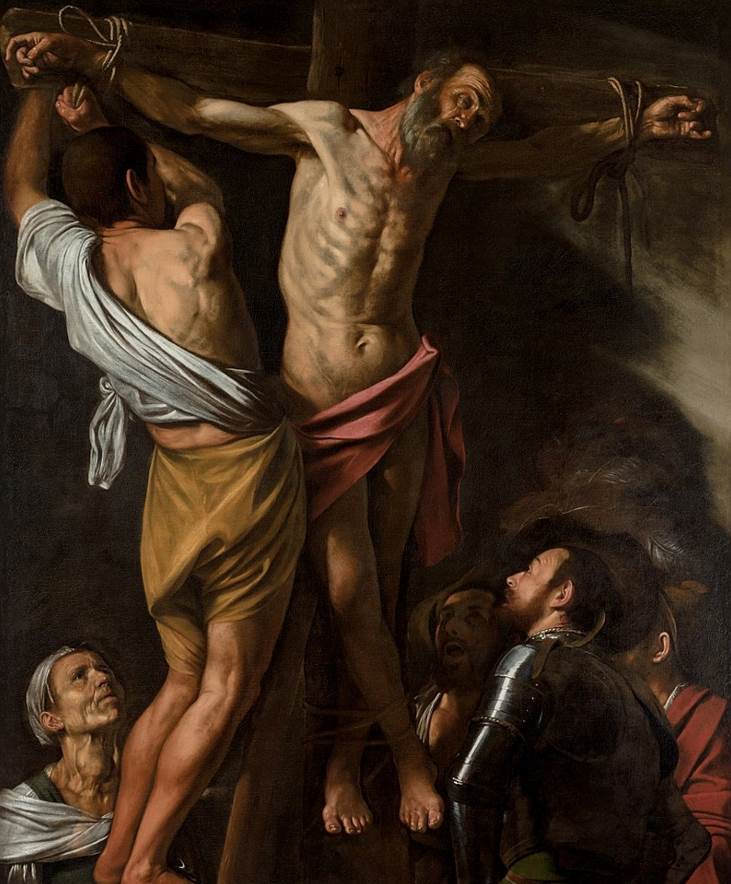
5. Portrait of Adeline Ravoux – Vincent van Gogh
- Date created: 1890
- Dimensions: 50.2 x 50.5 centimeters (19.25 x 19.87 inches)
The Portrait of Adeline Ravoux is one of several versions of paintings by Vincent van Gogh with the same subject. Adelie Ravoux was the 13-year-old daughter of Arthur-Gustave Ravoux, the owner of the establishment where he stayed in Auvers-sur-Oise. This village is now a suburb in the northeast of Paris.
The painting was produced during the final months of van Gogh’s life because, in July of the same year, he shot himself in the chest and passed away shortly after. Adeline wasn’t very happy with this painting because she stressed that she didn’t look like this at all. The girl was a witness when the artist returned from this fatal incident and saw him stumbling onto the stairs to go to his room.

6. Cupid and Psyche – Jacques-Louis David
- Date created: 1817
- Dimensions: 184 × 242 centimeters (72 x 95 inches)
Cupid and Psyche is also known as “Love and Psyche” and is one of the masterpieces by Jacques-Louis David (1748-1825), the leading Neoclassical artist of his time. The French artist was politically active and his outspoken opinion resulted in his exile after the fall of Napoleon, a man he fervently supported and painted on several occasions.
This means that the painting was produced while he was living in exile in Brussels, the capital of modern-day Belgium. It depicts a popular story in art history which is the love affair between Cupid and Psyche. This story was derived from “The Metamorphoses of Apuleius,” the only ancient Latin novel to survive in its entirety.

7. Portrait of Tieleman Roosterman – Frans Hals
- Date created: 1634
- Dimensions: 117 x 87 centimeters (46 x 34.2 inches)
The Portrait of Tieleman Roosterman is one of the many amazing portraits by Frans Hals, the renowned Dutch artist who lived during the Dutch Golden Age in the 17th century. It depicts a rich cloth merchant and was probably commissioned for the occasion of the subject’s marriage to Catharina Brugmans in 1631.
What’s remarkable is that this man was probably the sitter of another famous work by Frans Hals called “The Laughing Cavalier,” one of the highlights of the Wallace Collection in London. The painting at the Cleveland Museum of Art has a pendant painting of the man’s wife which is part of a private collection.
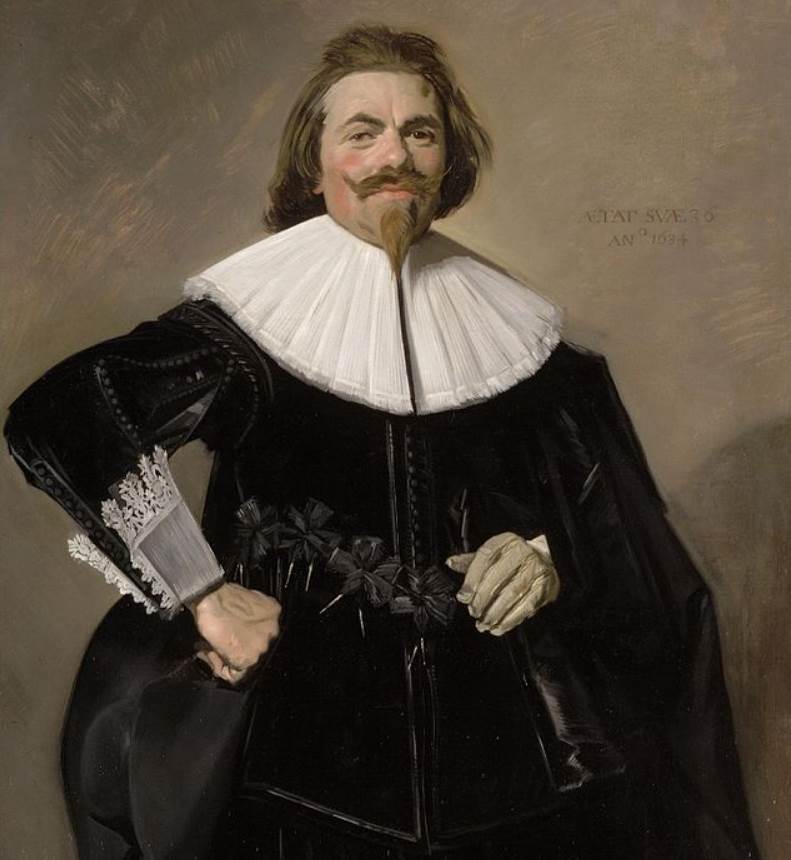
8. Portrait of Isabella Brant – Peter Paul Rubens
- Date created: 1620-1625
- Dimensions: 53 x 46 centimeters (20.8 x 18.1 inches)
The Portrait of Isabella Brant depicts the first wife of the famous Flemish artist of the Baroque period Peter Paul Rubens (1577-1640). She was a good catch for the artist because Isabella (1591-1626) was the daughter of Jan Brant, an important city official in Antwerp where the artist lived. She, unfortunately, passed away in the year 1626 at the age of 35.
The artist’s first wife was the subject of many Rubens paintings, including an amazing work called “The Honeysuckle Bower” (1609) in which the couple is depicted together. This painting is remarkable because it was painted shortly before her tragic passing from the plague a couple of years later.
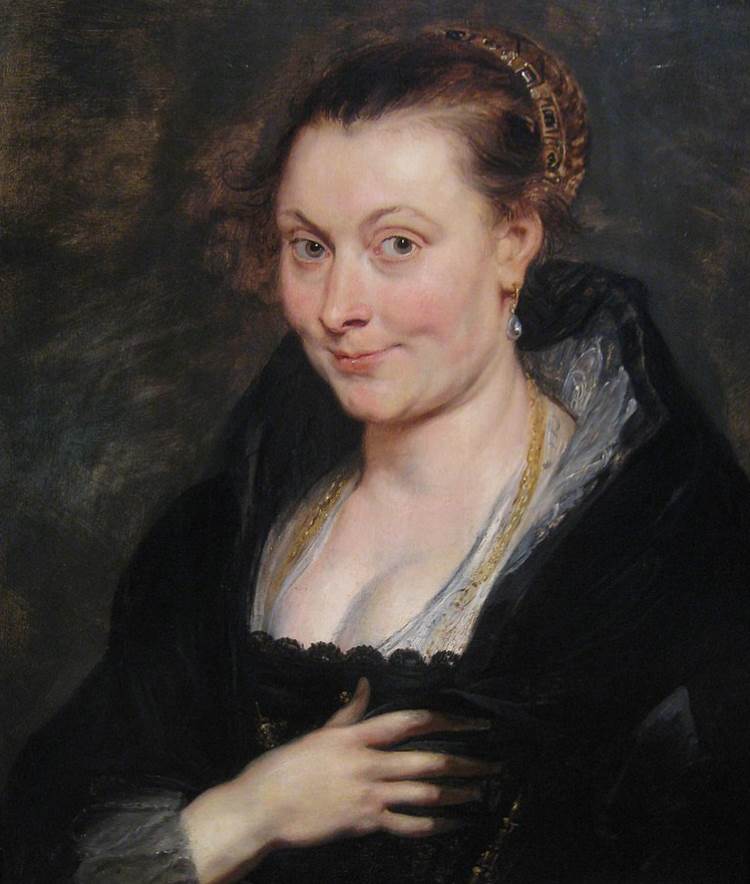
9. The Red Kerchief – Claude Monet
- Date created: 1869-1871
- Dimensions: 100 × 80 centimeters (39 × 31 inches)
The Red Kerchief is also known as “The Red Cape” and is another painting that depicts the artist’s wife. We can see Camille Monet, the wife of Claude Monet (1840-1926), through the window of the house they lived in at Argenteuil during the 1870s.
It’s a typical painting by Monet in style, one of the leading Impressionist artists, although he mostly produced his works “En Plein Air” or outdoors. It’s a unique work in the artist’s oeuvre as well because it’s the only snowscape in which his wife is featured.
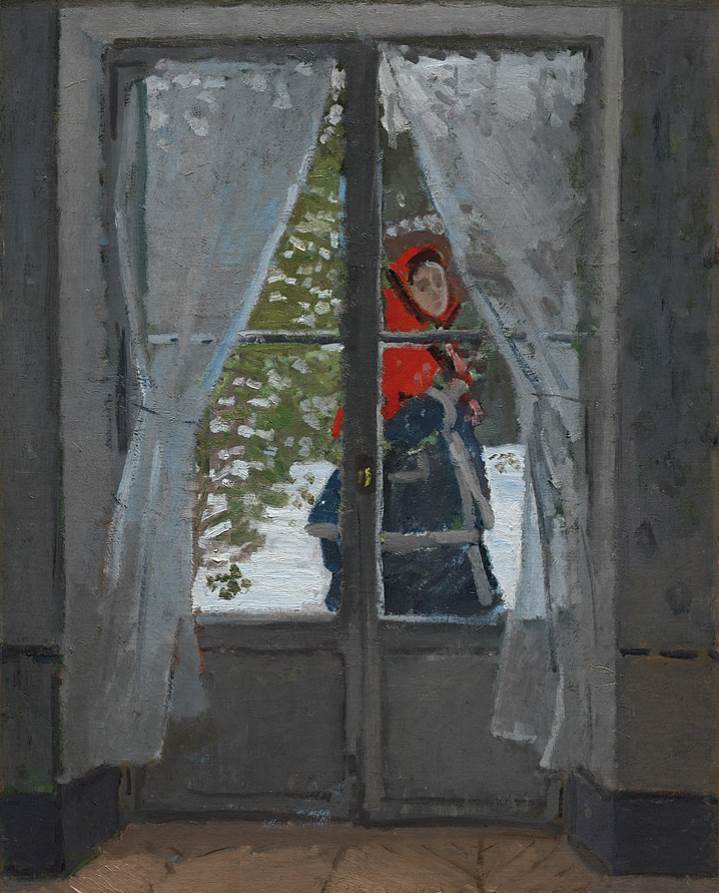
10. Stag at Sharkey’s – George Wesley Bellows
- Date created: 1909
- Dimensions: 92 × 122.6 centimeters (36.25 × 48.25 inches)
Stag at Sharkey’s is one of the best-known works by American artist George Wesley Bellows (1882-1925). He was involved in the Ashcan School of painting, a group of artists who focused on depicting everyday life in New York City during the late 19th and early 20th centuries.
The Ashcan School artists mainly focused on painting scenes from the poorer neighborhoods of the city. This painting depicts a boxing match at the local gym which was located right across from Bellow’s studio. It’s part of a series of paintings by the artist with boxing as the main theme.
